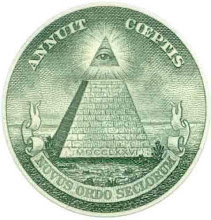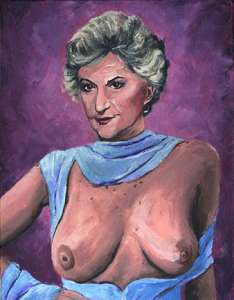
NUKU'ALOFA (AFP) - Tonga's Siaosi Tupou V was crowned king of his tiny South Pacific nation Friday in a lavish, pomp-filled ceremony attended by royalty from around the world alongside Tongans in traditional dress.
The sovereign of Polynesia's last monarchy sat on a huge golden throne, dressed in silk knee-breeches and a regal cloak trimmed with white ermine for the coronation ceremony, held in Nuku'alofa's Centenary Free Wesleyan Church.
Church bells tolled and a 21-cannon salute rang out as the 60-year-old king was crowned, two years after the death of his father, Taufa'ahau Tupou IV, who reigned for 41 years.
Around 1,000 guests filled the church and hundreds more sat outside trying to catch a glimpse of the king, known as George Tupou V in English.
Japan's Crown Prince Naruhito, Thai Princess Maha Chakri Sirindhorn and Britain's Duke and Duchess of Gloucester were guests of honour along with regional political leaders and Tongans wearing traditional woven mats around their waists.
Paul Ilavalu, a member of the choir that performed at the ceremony, said the country saw the coronation as a new beginning.
"We are all proud and we are happy to see our king crowned and we wish he will lead us to a new life and a new prosperity," he said.
Originally scheduled for last year, the coronation was delayed as Nuku'alofa reeled from the impact of a November 2006 riot sparked by a political rally in which eight people were killed and dozens of buildings looted and burned.
Since taking power in 2006, Siaosi has backed political reforms in the semi-feudal state, where nearly a quarter of the 115,000 population live under the poverty line.
He has also tried to shake off his reputation as an eccentric figure whose tastes include elaborate uniforms, colonial-era pith helmets, and monocles.
The king entered the church to a fanfare of horns followed by bearers carrying the regal symbols of power of crown, royal sceptre and ring, his three-metre (10-foot)-long train carried by two child pages.
Anglican Archbishop of Polynesia Jabez Bryce anointed the monarch with oil, and later placed the crown on his head.
The Fijian-based archbishop performed all of the rituals that involved touching the king, because protocol forbids Tongans from having physical contact with their monarch.
The archbishop wished the king "a long and glorious course of ruling a temporal kingdom wisely, justly and religiously" as guests fanned themselves in the tropical heat.
Hymns and music were performed by a 370-member local choir and orchestra in a service reflecting the nation's strict Christianity.
"If you went for no other reason, you would go for the singing," said New Zealand Prime Minister Helen Clark, describing the coronation as an "important episode in the life of Tonga."
American guest James R. Prescott praised the clockwork precision of the ceremony and described it as a "once in a lifetime experience."
The king left the church followed by his mother, 82-year-old Queen Halaevalu Mata'aho, in the royal cloak she wore for her husband's coronation in 1967.
Outside, the gathered crowd cheered as Siosi removed his crown to climb into his restored British Humber limousine for the short journey back to the palace.
Flag-waving school children cheered him along the road laid with ornately painted tapa cloth, made from the bark of the mulberry tree.
The western-style coronation came two days after Siaosi was installed in an ancient Tongan ceremony, in which more than 200 nobles and chiefs presented dozens of slaughtered pigs and hundreds of baskets of food in tribute.
Siaosi was offered a bowl of kava, a mild narcotic drink made from plant roots, to signify his sovereignty over Tonga, a country spread over 170 islands.
Around 5,000 Tongans living overseas returned for the celebrations, which also include a ball, charity concert, fireworks display and military parade.
The sovereign of Polynesia's last monarchy sat on a huge golden throne, dressed in silk knee-breeches and a regal cloak trimmed with white ermine for the coronation ceremony, held in Nuku'alofa's Centenary Free Wesleyan Church.
Church bells tolled and a 21-cannon salute rang out as the 60-year-old king was crowned, two years after the death of his father, Taufa'ahau Tupou IV, who reigned for 41 years.
Around 1,000 guests filled the church and hundreds more sat outside trying to catch a glimpse of the king, known as George Tupou V in English.
Japan's Crown Prince Naruhito, Thai Princess Maha Chakri Sirindhorn and Britain's Duke and Duchess of Gloucester were guests of honour along with regional political leaders and Tongans wearing traditional woven mats around their waists.
Paul Ilavalu, a member of the choir that performed at the ceremony, said the country saw the coronation as a new beginning.
"We are all proud and we are happy to see our king crowned and we wish he will lead us to a new life and a new prosperity," he said.
Originally scheduled for last year, the coronation was delayed as Nuku'alofa reeled from the impact of a November 2006 riot sparked by a political rally in which eight people were killed and dozens of buildings looted and burned.
Since taking power in 2006, Siaosi has backed political reforms in the semi-feudal state, where nearly a quarter of the 115,000 population live under the poverty line.
He has also tried to shake off his reputation as an eccentric figure whose tastes include elaborate uniforms, colonial-era pith helmets, and monocles.
The king entered the church to a fanfare of horns followed by bearers carrying the regal symbols of power of crown, royal sceptre and ring, his three-metre (10-foot)-long train carried by two child pages.
Anglican Archbishop of Polynesia Jabez Bryce anointed the monarch with oil, and later placed the crown on his head.
The Fijian-based archbishop performed all of the rituals that involved touching the king, because protocol forbids Tongans from having physical contact with their monarch.
The archbishop wished the king "a long and glorious course of ruling a temporal kingdom wisely, justly and religiously" as guests fanned themselves in the tropical heat.
Hymns and music were performed by a 370-member local choir and orchestra in a service reflecting the nation's strict Christianity.
"If you went for no other reason, you would go for the singing," said New Zealand Prime Minister Helen Clark, describing the coronation as an "important episode in the life of Tonga."
American guest James R. Prescott praised the clockwork precision of the ceremony and described it as a "once in a lifetime experience."
The king left the church followed by his mother, 82-year-old Queen Halaevalu Mata'aho, in the royal cloak she wore for her husband's coronation in 1967.
Outside, the gathered crowd cheered as Siosi removed his crown to climb into his restored British Humber limousine for the short journey back to the palace.
Flag-waving school children cheered him along the road laid with ornately painted tapa cloth, made from the bark of the mulberry tree.
The western-style coronation came two days after Siaosi was installed in an ancient Tongan ceremony, in which more than 200 nobles and chiefs presented dozens of slaughtered pigs and hundreds of baskets of food in tribute.
Siaosi was offered a bowl of kava, a mild narcotic drink made from plant roots, to signify his sovereignty over Tonga, a country spread over 170 islands.
Around 5,000 Tongans living overseas returned for the celebrations, which also include a ball, charity concert, fireworks display and military parade.

